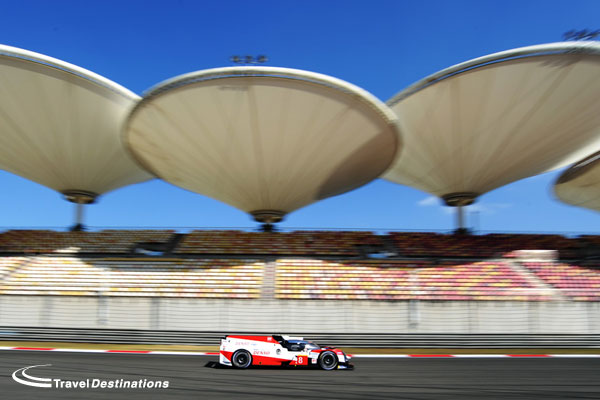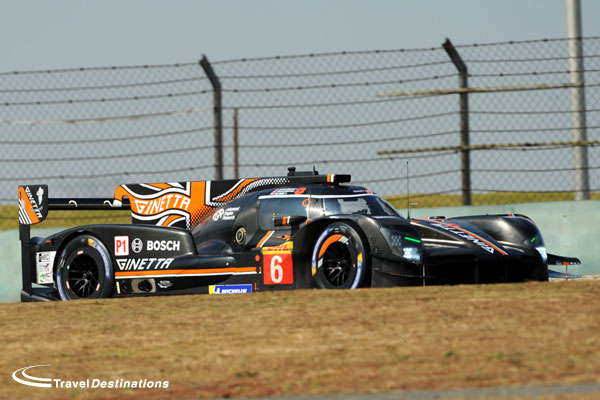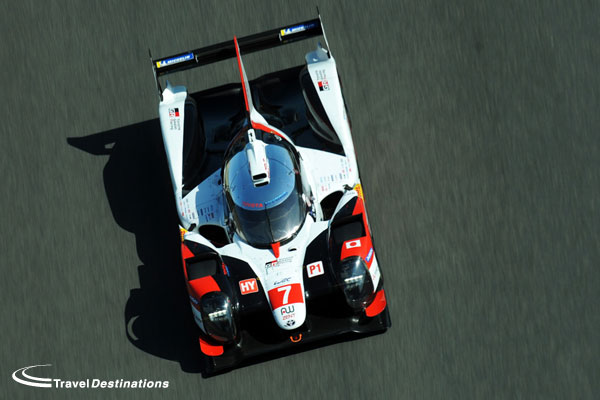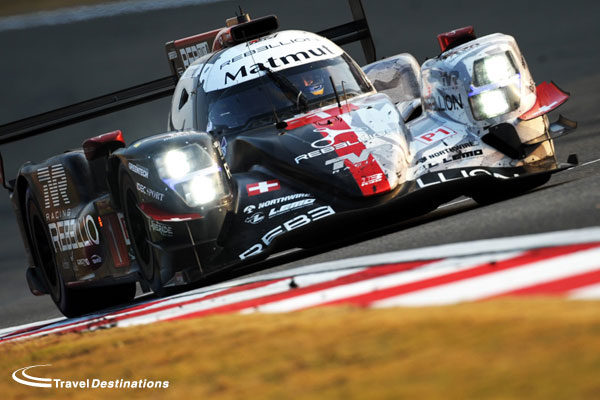After Rebellion’s Win In China, It’s Game On In LMP1
After the (new-for-Season 8) success handicap system produced a couple of exciting laps at Fuji back in October, the package of restrictions on the pair of Toyotas reached their maximum levels in Shanghai and delivered a remarkable result; a win for Rebellion Racing.
The two all-conquering TS050 HYBRIDs ran with less hybrid boost, more weight, and a restriction in the pits to offset their advantage in the speed in which they can pull out of their pit box (between 1-2 seconds faster than the privateer cars), the field finally looked more balanced, and it produced the best racing the class has seen since Porsche’s exit in 2017.

As early as practice on Friday, it looked like Toyota would be in trouble, its cars were seconds slower than the single Rebellion R-13 and pair of Team LNT Ginettas. Then in Qualifying, with low fuel and fresh tyres, the Rebellion took pole and the Ginettas slotted in second and third, with their Japanese-flagged rival settling for fourth and fifth on the grid.
The Shanghai circuit, with its lengthy straights, was always going to play into the hands of the privateer LMP1s, which are significantly faster in the top speed department. Toyota and its band of drivers made it clear on Day 1 to the media that it would struggle in Qualifying, but have enough pace during full stints in the race to see off the competition again and make it three wins in a row to start the season.
The inherent advantage that Toyota has with hybrid boost, which gives it extra punch through traffic and through corners has always caused the privateer runners, with their non-hybrid combustion engines to fade fast during the race, despite having single-lap pace to match up against the Toyotas. Not this time though!
At the start of the race it looked like the Swiss-flagged team’s hopes of winning met an early end. The #1 Rebellion R-13, with Norman Nato at the wheel, was swallowed up by the field and fell to sixth. After starting from pole he was jumped at the line by the Ginettas and #7 Toyota, before struggling with tyre temperature in the opening laps. Thus the Team LNT Ginettas stormed off into the lead, with the Toyotas chasing.

The two Ginettas drove away from the field, Charlie Robertson in the #6 G60-LT-P1 turning heads out front, setting the fastest lap of the race on Lap 2, some 1.3 seconds faster than the fastest lap by anything other than a Ginetta.
The pair led until the first set of stops, the #6 continuing to lead at the hour mark, before both cars dived into the pits to serve a penalty for jumping the start. The #7 Toyota was also handed a drive-through, the valuable time lost by all three proving costly by the end of the race. It effectively dropped the trio behind the Rebellion and the #8 Toyota, with a deficit that they would not recover from. Notably, the Ginettas suffered perhaps a little more than the other LMP1s too, all of which lost a chunk of pace to a track that became littered with tyre marbles, which meant any move off-line to overtake caused a severe loss of grip.
This left the #1 Rebellion and the #8 Toyota, both of which had a clean, faultless race, to battle it out for the win. The recovering Rebellion climbed the order after its slow start, and through sheer grit and determination from Bruno Senna and Gustavo Menezes and it should be noted, a clear performance advantage, went toe-to-toe with the Toyotas in a way they were unable to before.
While Sebastien Buemi vented his frustration after the race about the Toyotas’ inability to keep up with any of the prototypes (LMP2 cars included) down the straights, Brendon Hartley, his teammate, said he was encouraged by the racing the new rules had created. The difference in the way that the hybrid and non-hybrid cars produce lap times has never been more apparent.
The Toyotas looked visibly faster through traffic, and the R-13 and G60s looked staggeringly quick down the straights. It made for some entertaining on-track battles, all five cars at various points involved in door-to-door tussles, in which the drivers were forced to take advantage of the strengths of their cars to make up positions. “It was the best racing we’ve seen in the LMP1 class of the WEC for a long long time,” Menezes said after the race. “This championship needed this.”

As the race wore on, the fear that the Rebellion crew had about a disparity in tyre degradation and fuel consumption compared to the Toyotas, proved groundless. The advantage in pace was consistent throughout, the #1 eventually lapping one of the Toyotas en route to victory. It was the first for Rebellion since Silverstone last year when both TS050 HYBRIDs lost their 1-2 finish to a post-race disqualification, and ended Toyota’s eight-race winning streak. It was also the first-ever privateer win in the WEC ‘on the road’ and the first, non-hybrid victory (the result at Silverstone last year aside) since the very first WEC race at Sebring in 2012 when Audi’s TDI-powered R18s still held sway before the imminent introduction of the hybrid-powered e-Tron Quattros.
Looking ahead at the rest of the season, it is clear that the form book in LMP1 is likely to be topsy-turvy, with all five cars set to be dealt different sets of cards as the season progresses. Remember though, that the ‘Success Handicap’ does not apply for the season-closing Le Mans 24 Hours, in order to prevent teams from gaming the system. A different set of values will apply, however, the rule-makers now have a clearer picture than ever before of the level of restriction on the Toytas require to make a meaningful difference in their performance relative to their competition. The Game is on.
Written by Stephen Kilbey
Photography by Dailysportscar
You can join us at various FIA WEC Rounds this season. Currently we have availability for Sebring, Spa and of course Le Mans. Please call our reservations team to reserve your place track-side.

